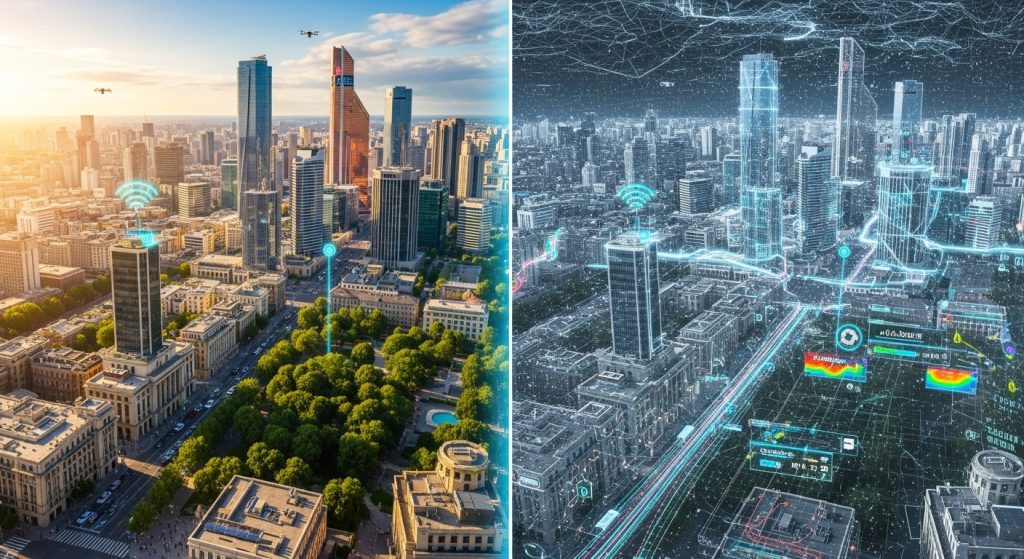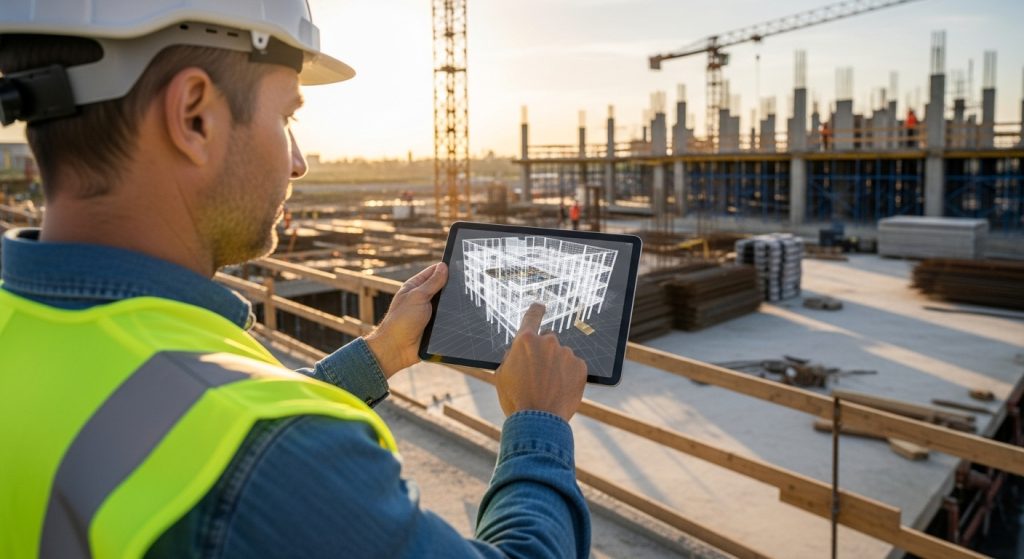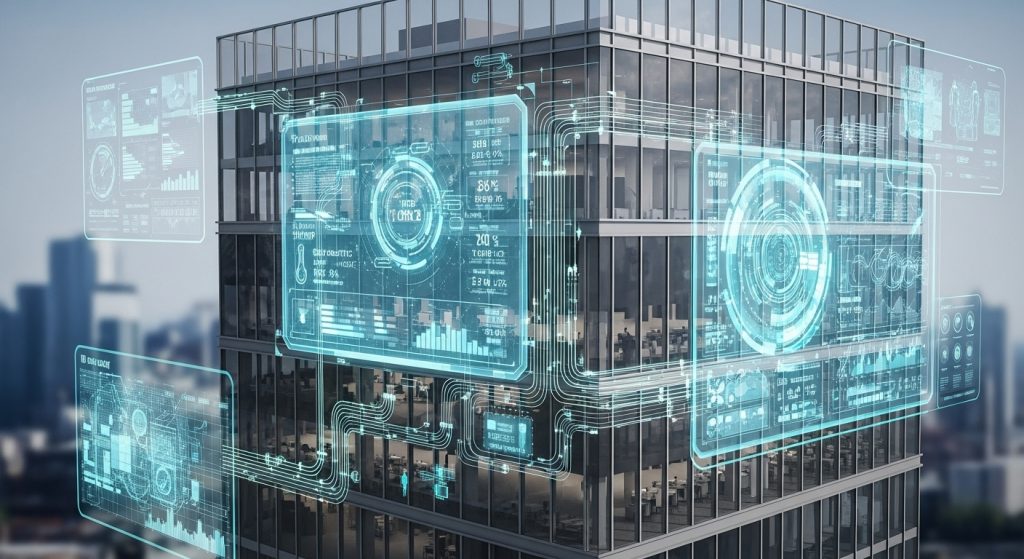
The construction industry is undergoing a significant transformation, moving from traditional methods to a more digitized and data-driven approach. At the heart of this evolution is the concept of digital twin construction. This innovative technology is more than just a 3D model; it’s a dynamic, virtual representation of a physical building or infrastructure project, updated in real-time with data from its real-world counterpart. This living digital model serves as a bridge between the physical and digital worlds, enabling stakeholders to simulate, analyze, and optimize every aspect of a project’s lifecycle, from design and construction to operation and maintenance.
Initially pioneered by NASA for the Apollo 13 mission, digital twin technology has found powerful applications across various sectors, and its impact on the construction industry is proving to be a game-changer. Unlike static Building Information Modeling (BIM), a digital twin in construction is a constantly evolving entity, fed with real-time data from IoT sensors, drones, and 3D laser scanners. This continuous flow of information allows for a level of insight and predictive capability that was previously unimaginable.
The global market for digital twins in the construction sector is a testament to its growing importance. Projections indicate substantial growth, with the market expected to reach significant valuations in the coming years. For instance, one report predicts the market will grow from USD 64.87 billion in 2025 to USD 155.01 billion by 2030, at a CAGR of 17.03%. Another forecast suggests the global digital twin for buildings market could reach USD 20.2 billion by 2032, growing at a CAGR of 32.6%.
The Manifold Benefits of Digital Twin Construction
The adoption of digital twin construction offers a wealth of advantages that address some of the most persistent challenges in the industry, such as cost overruns, project delays, and safety concerns.
Enhanced Efficiency and Cost Savings
One of the most significant benefits of digital twin technology is its ability to improve efficiency and reduce costs throughout the project lifecycle. By creating a virtual prototype, potential issues and clashes can be identified and resolved in the digital realm before any physical work begins, minimizing costly rework during the construction phase. Digital twins enable better resource allocation, helping to reduce material waste and optimize labor costs. This proactive approach to project management can lead to substantial financial savings. For example, the use of digital twins can result in 15-30% operational cost reductions and 20-40% maintenance efficiency gains.
Improved Collaboration and Decision-Making
Construction projects involve a multitude of stakeholders, including architects, engineers, contractors, and clients. Digital twins provide a centralized, single source of truth that enhances collaboration and communication among all parties. This shared understanding of the project’s status and progress minimizes misunderstandings and ensures everyone is aligned. Real-time data and simulations empower stakeholders to make more informed, data-driven decisions, leading to better project outcomes.
Heightened Safety and Risk Mitigation

Safety is a paramount concern on any construction site. Digital twin construction contributes to a safer working environment by allowing for the simulation of construction processes and the identification of potential hazards before they occur. Real-time monitoring can alert teams to unsafe conditions, and the technology can be used for remote inspections of hazardous areas. By proactively managing risks, digital twins help to reduce accidents and improve overall site safety.
Predictive Maintenance and Lifecycle Management
The value of a digital twin extends far beyond the construction phase. Once a project is complete, the digital twin serves as a comprehensive virtual manual for the building’s entire lifecycle. By continuously monitoring the performance of assets through IoT sensors, it can predict maintenance needs before failures occur, reducing downtime and repair costs. This predictive maintenance capability ensures the long-term operational efficiency and sustainability of the asset.
Real-World Applications of Digital Twin Construction
The theoretical benefits of digital twin construction are being realized in numerous projects around the world, from individual smart buildings to entire smart cities.
Iconic Buildings and Infrastructure

Several high-profile construction projects have successfully leveraged digital twin technology. For instance, The Shard in London utilized a digital twin to optimize its energy usage and reduce its carbon footprint. The Crossrail project, also in London, employed a digital twin to monitor construction progress and identify potential issues before they became major problems. These examples showcase the power of digital twins in managing the complexity of large-scale projects.
Smart Cities and Urban Planning
On a larger scale, digital twin technology is being used to create virtual replicas of entire cities. Siemens, for example, created a digital twin for Singapore to simulate urban environments and optimize traffic flow, energy distribution, and environmental sustainability. These city-scale digital twins are invaluable tools for urban planners, allowing them to test and refine development strategies in a virtual environment before implementing them in the real world.
Overcoming the Challenges of Implementation
Despite the clear advantages, the widespread adoption of digital twin construction is not without its hurdles. Several challenges need to be addressed for the industry to fully embrace this transformative technology.
Data Management and Integration: Creating and maintaining a digital twin requires the integration of vast amounts of data from various sources, which can be a complex undertaking.
Initial Investment: The upfront cost of implementing digital twin technology, including software, hardware, and training, can be a significant barrier for some companies.
Skill Gap: There is a shortage of professionals with the necessary skills to effectively implement and manage digital twin technology.
Interoperability: Ensuring that different software and systems can communicate with each other is a crucial challenge to overcome.
Data Security: The vast amount of data collected and stored in a digital twin raises important concerns about data security and privacy that need to be addressed.
The Future of Digital Twin Construction: What’s Next?

The future of digital twin construction is bright, with ongoing advancements in technology poised to unlock even greater potential. The integration of Artificial Intelligence (AI) and Machine Learning (ML) will enhance the predictive capabilities of digital twins, enabling more autonomous decision-making. As the Internet of Things (IoT) continues to expand, the volume and quality of real-time data will further enrich these virtual models.
We can expect to see wider adoption of digital twins across all scales of construction projects, from residential buildings to sprawling infrastructure networks. The increasing focus on sustainability and the need for more resilient cities will also drive the demand for this powerful technology. Ultimately, digital twin construction is set to become an indispensable tool for creating a more efficient, safe, and sustainable built environment.



